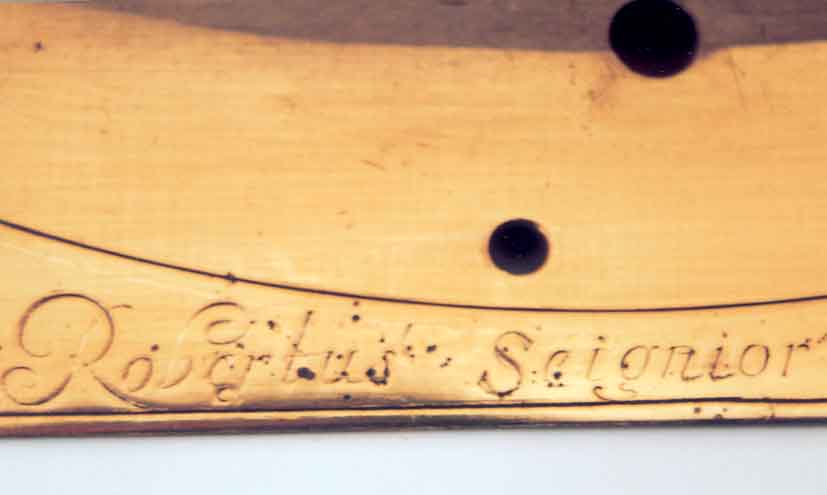Seigneur of London



Recently I purchased on eBay an early eight-day longcase brass dial movement with the signature ‘Robertus Seignior Londini’ engraved on the bottom edge of the dial plate. The movement definitely appeared to be an early one, having an outside count wheel, latched pillars and evidence of once having maintaining power of the bolt-and-shutter type. The only puzzling feature was the brass dial of the movement. The signature appeared genuine but the dial was 12in square. The spandrels were twin-cherub-and-crown and were an obvious later replacement as there was a vacant spandrel screw hole at each corner of the dial from an earlier period spandrel.
The narrow chapter ring of the dial was also unusual in that it lacked an internal minute division ring. There were three small brass tabs that had been neatly riveted to the rear edge of the dial that appeared to have been cut off at the edge. Still I was extremely surprised to have won this interesting old clock movement as I had quite expected that it would sell for much more than I had bid.
When I informed a few of my friends in the UK of my acquisition the suggestion that the movement was a possible fake was raised. The apparent catalyst for this was the size of the dial, a 12in dial being unheard of for a clock of the 1680s. There was a suggestion that the dial may have been married to the movement at a later date and that the signature could be a fake.
But what possible advantage would any faker have gained by placing all that effort into making a 12in dial when he would have gained a lot more financially by making the dial the traditional 9in or 10in in size. Jeremy Evans at the British Museum has suggested that the brass tabs on the rear of the dial may be the remains of right angle securing brackets that would indicate that the movement had once been fitted, like a gallery clock, into a piece of furniture or a building. He felt that the signature appeared to be genuine. Further to this the dial has repairers’ marks on its rear that date 1830 and 1836 so it appeared the dial must be genuine.
Unfortunately living in the Antipodes, I can find very little information on Robertus Seignior and I have little chance of tracking down another of his longcase clocks to compare with the movement that I have in my possession.
Readers may well understand the dilemma that I face. On the surface I have a very interesting old movement by an esteemed maker that appears in many ways to be genuine but with question marks regarding its authenticity. How can an enthusiastic amateur discover if the horological treasure he has is indeed the genuine article?
In this situation the only resources that I have to call upon are the faithful readers of Clocks magazine. To this end could I appeal to any reader who may be able to provide me with any pictures or information on longcase clock movements by Robertus Seignior or indeed details of his work to kindly contact me and help me solve my interesting dilemma. Any information supplied will be gratefully appreciated and treated with the utmost confidence.
Clive Pickering, Australia
|

